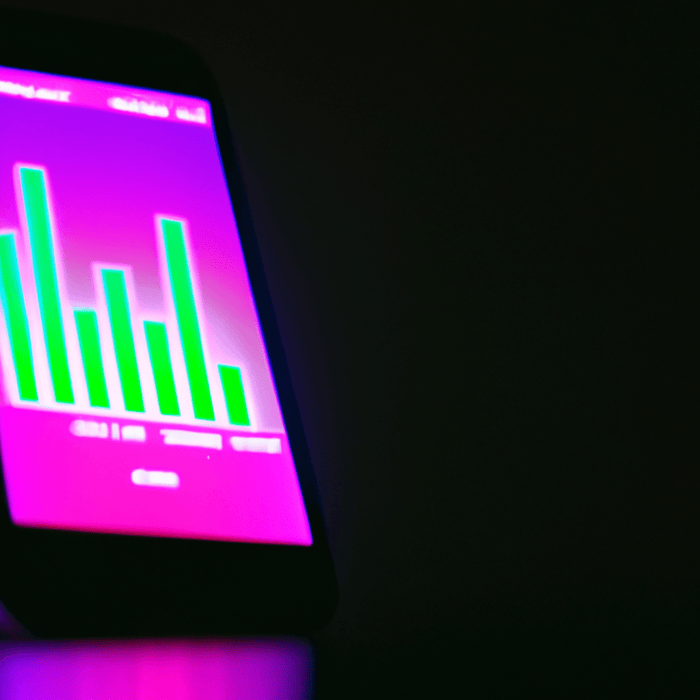The PPC industry is currently awash with talk of machine learning & automation. In this 3 part blog series we’ll be outlining our view on the current state of automation and some "human led" techniques PPC advertisers can utilise to automate effectively using business data (rather than relying on ad platform conversion data).
When running a PPC campaign the most important question is usually; “how much can I afford to pay for my traffic that ensures we get enough volume at my target KPI”. There are so many factors that go into what level of presence you should have on any PPC activity (campaign, keyword, ad unit) and it’s vital that this ties in exactly with the main KPI you are aiming to achieve as a business.
E-commerce advertisers can utilise an online-only bid management tool (e.g. Google Conversion Optimiser, Acquisio, Marin etc), which will set the level of presence based on the online-only KPI target you set. Whilst it is possible to get Profit/Margin information included here, usually these bid management tools optimise towards click attributed Revenue & ROI.
Now, what are some issues with optimising in this way?
"Online Only” information isn’t always an accurate representation of true channel performance
Regardless of which attribution model you use, you’ll always miss out on the actual "value” of each click given users switch devices & clear cookies more than they have previously.
Almost all advertisers will be experiencing an increase in Mobile traffic year on year, along with a rise in “Direct” revenue.
Given this will be affecting all “online only” attribution models, it’s vital that advertisers look at data sets for the entire website performance & ensure their optimisations don’t ignore areas that are likely to providing value.
Past performance ≠ expected future performance
A massive limitation in optimising solely using online data is that it is purely historical, and doesn’t account for any changes that have happened that have the ability to change the performance we can expect from the channel/campaign.
As an example, let’s say you are an online bakery selling Wedding Cakes. You have a 5:1 ROI target, and in the past month your Wedding Cakes Search & Shopping campaigns have achieved a 7:1 ROI.
The graph below follows an expected level of return for each level of media spend based on the historical data. The dotted line in Red outlines the current return at a 7:1 ROI, with the dotted Green line outlining the additional spend/revenue possible at a 5:1 ROI:

Now, let’s add a realistic business scenario that might have occurred since the Google Ads account has achieved a 7:1 ROI for Wedding Cakes.
A core competitor, MegacorpWeddingCakez.com, has finally got their act together and has launched a Wedding Cakes shopping campaign with aggressive CPC bids
This hurts on two levels; it will “spread” possible conversions amongst more advertisers (hurting your conversion rate) and increasing the effective CPC’s for the traffic from your campaigns (increasing cost).
What this does is essentially shift the forecast line down (as the expected return is lower than when Megacorp weren’t showing). The dotted Red & Green lines are in the same positions, so without any change in spend levels the campaigns would come in at 5:1, whilst if the automated bidding implements the changes it expects the ROI would drop do 4:1 (under the target).

The automated bidding will recognise & amend the algorithm due to the conversion rate/CPC’s fluctuations, although based on click volume/learning time it could mean that you’ve overpaid for traffic for 2 - 3 weeks. NB. the time it takes for the machine learning/automation to register this new data point and adapt is dependent on the number of clicks/traffic volume.
There are a number of other factors that can change the forecast line, including:
-
A big shift in seasonality between the historical data and the period you’re moving into. For example, the 7:1 ROI might have been achieved in a seasonal peak period (e.g. April – May), with conversion rate typically tailing off 10% per month thereafter. This would shift the forecast line down, making the ROI lower for the same forecast spend.
-
There could be a significant change in stock levels across the core product range (e.g. 50% of the most popular sell out). This decrease in consumer choice can lead to a drop in conversion rate, which again would drop the forecast line from what Google are expecting based on the historical stats.
-
A significant news story/industry update has the potential to upset the forecast also. For example, if BBC released an article regarding the cost of Wedding Cakes increasing 4x in 10 years, your ads could have an influx of traffic from low value searchers. Again, this shifts the ROI forecast line down.
Optimising PPC in silo doesn’t speak to business priorities
There are many moving variables in the world of an e-commerce website, with priorities often shifting on a day by day basis. Stock levels, pricing strategy, brand/supplier relationships and sale periods are all liable to change, and the respective internal teams will often reach out to their PPC managers to change short term presence in order to hit a short term business need.
The changes that PPC managers need to make (like consumer behaviour) are often “irrational” – i.e. they can be counter-intuitive in achieving the KPI goal that the channel is optimising towards
Using a retailer in the consumer electronics vertical as an example:
-
The buying team advise that they have 10x the number of Hotpoint Double Ovens in stock than they have for any other Oven. As such, they are asking the PPC team to push these ovens in particular and that they’d accept a lower ROI/Margin for sales of these products
-
Management have implemented a flash sale of all Beko Dishwashers, with all prices down 25%. The PPC team have been asked to raise all bids accordingly for 48 hours, as there is the belief that Beko is likely to perform at a much higher conversion rate
-
A key supplier has e-mailed expressing concern that they never see an AO.com shopping ad for any Samsung TV’s, even though they had an agreement with the procurement team that they would show in at least 1 in 4 searches. Again, the PPC team have been tasked with amending bids to allow for higher than current presence for Samsung TV’s.
The issue with using a bid management solution in these examples is that they are “irrational” business decisions that the bidding algorithm can’t possibly factor into its calculations. It’s impossible to structure a PPC account which would allow flexibility to change presence around these irrational business requirements, with new campaigns often required to implement even the simplest of workarounds.
OK Computer.
Whilst there are definitely instances where utilising online only automation can be beneficial, the above highlights some pitfalls that advertisers should bear in mind.
Our next 2 articles will review some processes & automation e-commerce advertisers can implement instead of online only automation.





